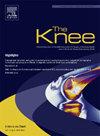分阶段双侧全膝关节置换术中植入物设计一致性对步态模式和功能结果的影响:一项比较分析。
IF 1.6
4区 医学
Q3 ORTHOPEDICS
引用次数: 0
摘要
背景:本研究的目的是评估在分阶段双侧TKA中,相同植入物设计的患者和不同设计的患者在足底压力分布和步态周期方面是否存在差异,并研究这些差异对临床和功能结果的影响。方法:对所有接受分阶段双侧TKA的患者进行回顾性分析。根据双膝假体设计将患者分为两组。比较两组之间的各种因素,包括人口统计数据、放射学测量、功能评分、步态分析和足底压力制图。结果:采用相同种植体设计的患者功能评分有统计学意义上显著提高(p = 0.001)。此外,不同种植体设计的患者摆动前双下肢足底分布差异大于相同种植体设计的患者(p = 0.031)。同样,不同种植体设计组之间的初始接触相负荷分布差异明显高于相同种植体设计组(p = 0.014)。结论:两种不同种植体设计的个体在分阶段双侧TKA中表现出步态周期和足底压力分布的明显不平衡。这可能导致各种后果,包括运动障碍,患者不满,甚至早期种植体失败。因此,应尽可能使用相同的植入物设计,以达到平衡的膝关节运动学和良好的预后。本文章由计算机程序翻译,如有差异,请以英文原文为准。
The impact of implant design consistency in staged bilateral total knee arthroplasty on gait patterns and functional outcomes: A comparative analysis
Background
The aim of this study was to assess whether there are any differences in plantar pressure distribution and gait cycle between patients with the same implant design and patients with different designs in staged bilateral TKA and to examine the impact of these differences on clinical and functional outcomes.
Methods
A retrospective review was conducted of all patients who underwent staged bilateral TKA. The patients were divided into two groups based on the prosthesis design used in both knees. A comparison was made between the two groups regarding various factors, including demographic data, radiological measurements, functional scores, gait analysis, and plantar pressure mapping.
Results
Patients with the same implant design were found to have statistically significantly higher functional scores (p = 0.001). Furthermore, the difference in pre-swing phase plantar distribution for both extremities in patients with different implant designs was found to be greater than in those with the same implant design (p = 0.031). Similarly, the difference in initial contact phase load distribution between the different implant design groups was found to be significantly higher than that observed in the same implant design group (p = 0.014).
Conclusion
In conclusion, individuals with two different implant designs in staged bilateral TKA showed a substantial imbalance in gait cycle and plantar pressure distribution. This may result in various consequences, including impairment in movement, patient dissatisfaction, and even early implant failure. Therefore, the same implant design should be used as much as possible to achieve balanced knee kinematics and favorable outcomes.
求助全文
通过发布文献求助,成功后即可免费获取论文全文。
去求助
来源期刊

Knee
医学-外科
CiteScore
3.80
自引率
5.30%
发文量
171
审稿时长
6 months
期刊介绍:
The Knee is an international journal publishing studies on the clinical treatment and fundamental biomechanical characteristics of this joint. The aim of the journal is to provide a vehicle relevant to surgeons, biomedical engineers, imaging specialists, materials scientists, rehabilitation personnel and all those with an interest in the knee.
The topics covered include, but are not limited to:
• Anatomy, physiology, morphology and biochemistry;
• Biomechanical studies;
• Advances in the development of prosthetic, orthotic and augmentation devices;
• Imaging and diagnostic techniques;
• Pathology;
• Trauma;
• Surgery;
• Rehabilitation.
 求助内容:
求助内容: 应助结果提醒方式:
应助结果提醒方式:


